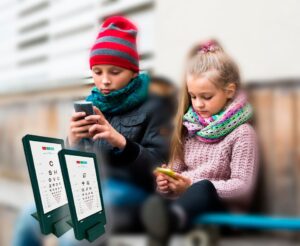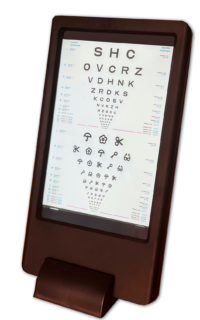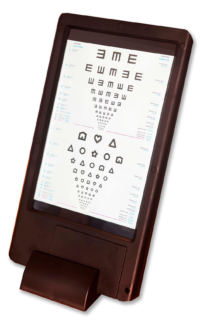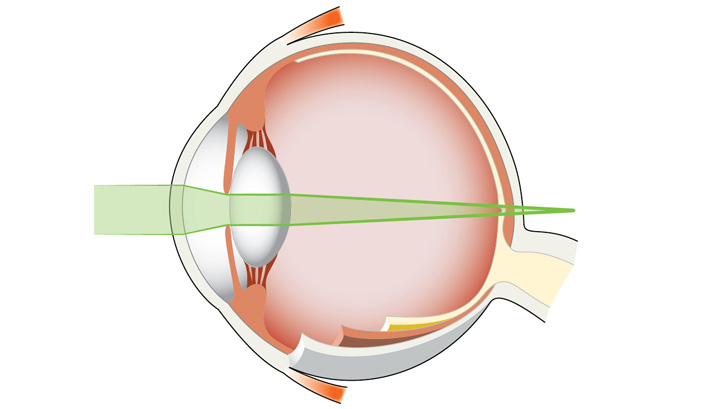It is More Important Than Ever to Test for Nearsightedness.
Approximately one in five Danish children suffers from nearsightedness, an increase from previous years. Severe nearsightedness is associated with serious eye complications, and the extreme increase in children’s screen time on iPads and mobile phones has been identified as a significant factor in this unfortunate development.
Nearsightedness can lead to fatigue, irritation, and headaches due to difficulties in seeing distant objects.
There Should Be No Difference in How Distance and Near Vision Charts Are Constructed!
A vision chart for measuring nearsightedness (myopia) should fundamentally be constructed in the same way as a standard vision chart. However, this simple basic rule has surprisingly rarely been followed in the design of near vision charts.
A standard vision chart, such as ETDRS or HOTV, is designed to assess distance vision—typically at 3 or 6 meters. It measures how well you can see objects at a distance. In contrast, a near vision chart is used to assess near vision, typically for tasks such as reading or using a computer—typically at a distance of about 30-40 cm, which is the typical reading distance.
Although a distance chart can indicate the presence of nearsightedness by showing reduced distance visual acuity, it is not the optimal tool for accurately diagnosing or quantifying the degree of myopia. A combination of tests, including those specifically designed for near vision, should be used to provide a comprehensive evaluation.
Construction of a Near Vision Chart for Myopia:
Symbols, Font Size, and Line Spacing: There should be no difference from standard vision charts, but values should also be calculated based on the testing distance. Charts like Jaeger, etc., have contributed to complicating the process of conducting a proper near vision screening.
Optical Correction: If the purpose of the chart is to determine a person’s need for reading glasses or other correction for nearsightedness, the vision chart can be used with and without reading glasses to assess the difference in clarity.
In Short: A near vision chart is designed to assess nearsightedness and is constructed with smaller text or symbols and closer viewing distances compared to a standard vision chart used for distance vision testing. However, they should be constructed according to the same standards as distance vision charts!
So, it is important to choose charts that comply with ISO 8596.
























